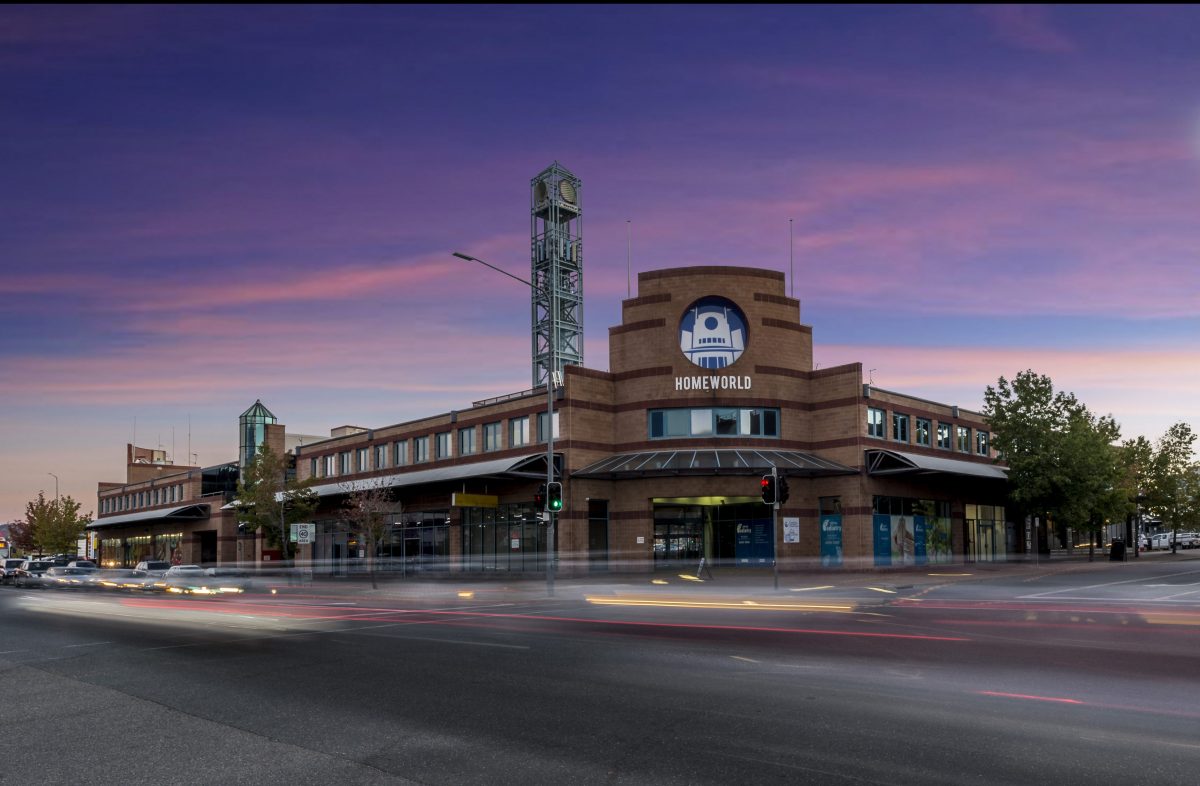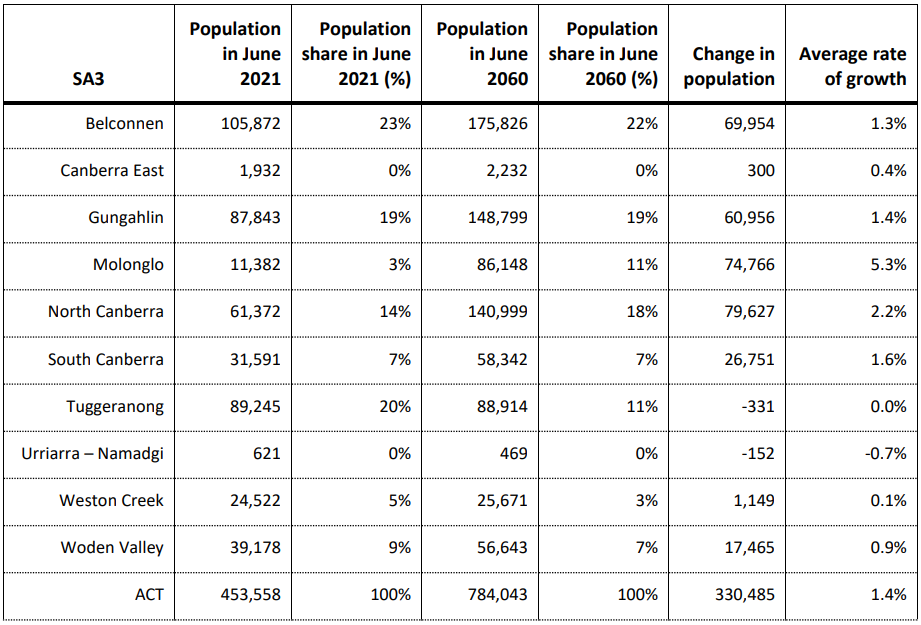
‘Relatively aged districts’ like Tuggeranong and Woden Valley are predicted to decline or grow marginally in the latest population projection. Photo: Sentinel.
The Canberra Liberals have blasted the ACT Government for what it said was “serious long-term neglect” of Canberra’s southern suburbs, while the Chief Minister has accused the Opposition of “misrepresentation” of the numbers.
It’s off the back of the latest ACT Population Projections 2022 to 2060, which stated the Territory’s population was expected to reach about 784,000 people by June 2060.
That’s about 63,000 extra people than the previous prediction from 2019.
The ACT is also expected to reach half a million people two years earlier than previously predicted.
In light of this, the Canberra Liberals have accused the current ACT Government of failing to use its past 20-plus years in power to “adequately plan” for population growth.
“It is estimated Canberra will need an extra 100,000 homes by 2050, and we are already well behind where we need to be due to the Labor-Greens government’s failure to prioritise housing, including continually strangling the release of land in the ACT,” Leader Elizabeth Lee said.
“Canberra is also suffering from long-term neglect of our health system, including the longest emergency department wait times in the country; hazardous and toxic materials in our schools and a chronic teacher shortage; smallest police force [per capita] in the country; a housing affordability crisis; and serious long-term neglect of our suburbs.”
Ms Lee pointed the finger at the light rail project, accusing the government of putting it ahead of all other priorities.
“The truth is, this Barr-Rattenbury government has no desire to prioritise key government services and has pulled hundreds of millions of dollars out of our health system, public housing, critical road upgrades and cut education funding over the last decade in order to pay for the tram,” she said.
“If the priorities of this government are not in fixing [these issues] … how can Canberrans have any faith our city is well prepared for a growing capital?”
According to the report, the Molonglo Valley district is expected to grow the fastest over the 40-year period, although Belconnen will remain the largest district.
This growth is expected to be driven by the Denman Prospect and Whitlam developments, growing at an average rate of 5.3 per cent, followed by infill-driven developments in Canberra’s north.
But the opposite is predicted to occur for Canberra’s south.
“Established and relatively aged districts in 2020 like Tuggeranong and Weston Creek are either projected to shrink or grow marginally in population by 2060,” the report stated.
“By June 2026, four suburbs from the Gungahlin district are expected to be among the top 10 ACT suburbs by population.”
Belconnen, Bruce, Kambah, Gordon, Kingston and Civic would complete the top 10.
Ms Lee said the predicted slow growth and decline in the southern suburbs followed “decades of neglect” by the government.
“These projections show that this government has no plan or desire to reinvigorate our suburbs or provide the desperately needed housing and basic services that Canberrans deserve,” she said.
“Ultimately, all this government is offering to southern Canberra suburbs is a tram that will not be delivered for decades, will be slower than a properly functioning bus network and will cost billions upon billions with the money to be taken from other key areas such as health, education and city services.”
However, the ACT Government has strongly disagreed it has neglected Canberra’s southern suburbs.
Chief Minister Andrew Barr said demographic changes such as ageing populations and smaller household sizes were the most significant factors impacting the number of people in Canberra’s south.
He pointed to numerous projects promised for the region, including suburban shopping centre upgrades, the Lake Tuggeranong Foreshore, Tuggeranong Town Centre, the Canberra Arena Ice Skating facility and the new CIT Woden campus.
“There have been, and will continue to be, numerous renewal projects and precincts in southern Canberra,” Mr Barr said.
He said the long-term projections were just that – projections – and that they’re subject to external influences and ongoing revision.
The report itself noted the ABS had underestimated the ACT’s population by about 22,000 people before the 2021 census, and the COVID-19 pandemic meant there was “greater uncertainty” around the projections compared to previous years.

Predicted population change in ACT statistical areas between June 2021 and June 2060. Photo: CMTEDD.
Mr Barr also assured further growth was possible for southern Canberra.
“The government will use planning decisions to influence population growth in areas with capacity, such as Tuggeranong, with growth concentrated along transport corridors and in areas with easy access to local shops, recreational facilities and green spaces,” he said.
“Consideration for local environmental and cultural assets will also be considered in directing appropriate areas for new dwellings, as per the ‘identified change areas’ set out in the draft district strategies.”
The Chief Minister also called out the Canberra Liberals for “misrepresentation” when it came to population size.
“In the last election campaign, the Liberals claimed that people were leaving Canberra in large numbers to move over the border to NSW. The 2021 census showed the extent of their misrepresentation on that issue,” Mr Barr said.
He added that the long-term population projections weren’t major factors in the lead-up to the June Budget or the Territory Planning Bill, both of which were still being put together.
“The more impactful data source is the 2021 Census and the most significant influence will be the Federal Budget in May,” he said.





















